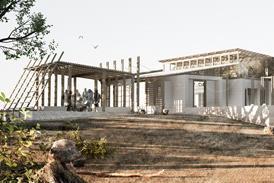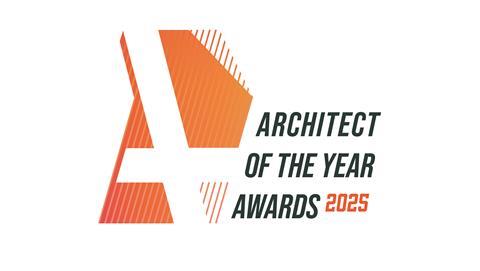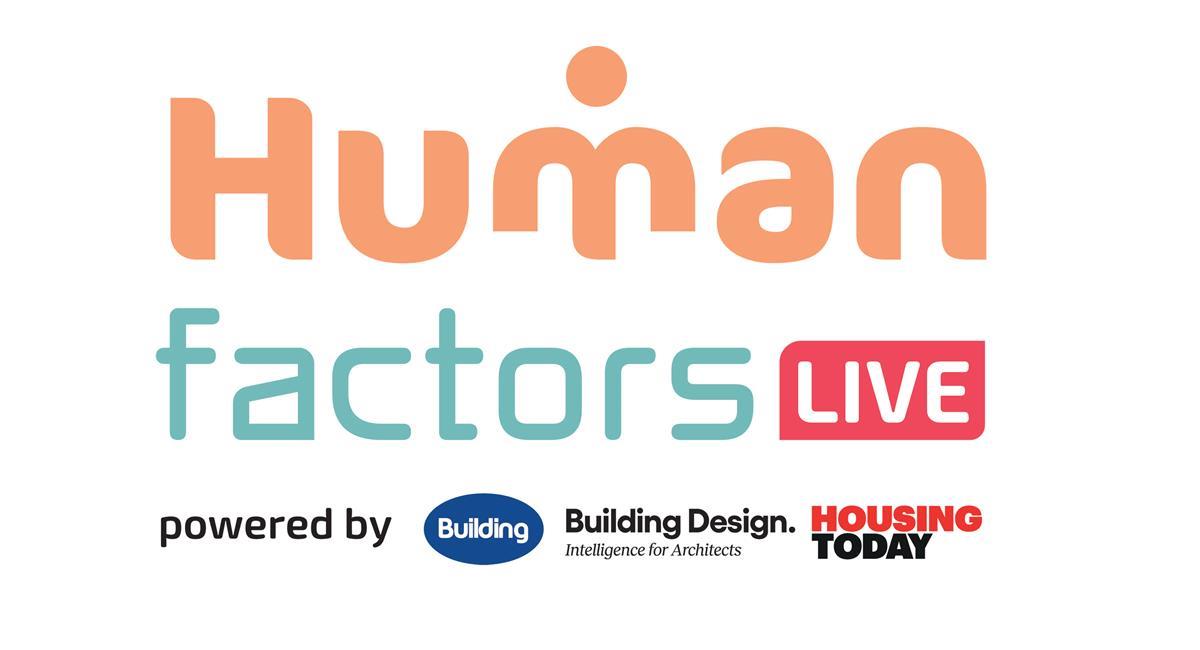In the final article of this current series by recent Bartlett Part 3 candidates exploring the future of architecture, Robert Serman considers how circular design and material reuse could help create a zero-waste built environment

Silo, which claims to be the world’s first ‘zero-waste restaurant’ and is based in Hackney Wick, proudly displays on its reception counter a set of marbled cubes, made from the only waste the restaurant could not compost, reuse or upcycle. In the words of founder Douglas McMaster, they serve as a reminder to “continue to make the greatest possible effort within the bandwidth of our own sustainability”.
Intrigued by an image of one of these cubes, I questioned whether such a waste cube could be the future of construction. Sadly, there are only two and a half of them in existence, so we cannot physically build with these blocks, but if we adopt the philosophy embodied within them, we may just transform our industry.
This begs the question, is it possible to replicate this thinking within the construction industry and for us to design and deliver zero-waste buildings?
Circularity is much discussed in architectural circles today. As Julia Barfield has pointed out, “the built environment is responsible for 42% of the UK’s carbon emissions, a staggering 62% of the UK’s waste and 50% of extracted material use, plus there has been 50% biodiversity loss in the last 50 years”. We cannot ignore the implications of this, and we have a duty to address the issue and effect change.
As the Ellen MacArthur Foundation points out, a key focus of the circular economy is managing materials in a way that ‘minimises, tracks, and eliminates the use of toxic chemicals, while eradicating waste through careful design’. Addressing waste is not just a minor intervention, it is fundamental to transforming the systems underpinning construction and the built environment.
The onus is therefore upon us as designers to analyse waste from the inception of a project all the way to its end-of-life. With research anticipating that 80% of the buildings that will be in use in 2050 are already standing, the question becomes how we intervene. Demolition is proven to be a waste of materials and a carbon burden, so we need to reuse and adapt our existing building stock.

As Duncan Baker-Brown (pity he didn’t win the RIBA presidency) states, when it comes to throwing away waste “there is no away” and our role as designers has evolved to the point of becoming resource managers. We need to assess what existing materials and components can remain, what can be adapted and what can be reallocated and reused elsewhere.
Futurist Alex Steffen argues that “there is no such thing as waste, just ‘stuff’ in the wrong place”. In this sense, we need to recalibrate our thinking regarding buildings at the end of their lives. No longer should we see them as structures to be demolished, but rather we should envision them as material banks and a vital link in the supply chain.
With resources no longer considered waste, the process of sourcing materials is also altered. Instead of seeking new materials, we should delve into the world of urban mining. Not unlike chefs sourcing local ingredients, we too should be creating and investigating “harvest maps” in the vicinity of our project sites.
These maps, managed on digital platforms, would help identify waste materials near your site and allow the opportunity for discarded materials to be repurposed. By mining the Anthropocene (the human-made geological era), we redefine “waste” as a resource, set closed-loop systems in place and begin to lessen the burden on our finite natural systems to satisfy our material needs.
If new materials have to be sourced, one should consider material cascading, the practice of extending a material’s life by finding multiple uses for it before it is finally recycled or disposed of.
Through this process, materials are used efficiently, with the by-product from production resulting in a usable product and thereby reducing waste. Anyone who has ever tussled with trying to dismantle a timber pallet will understand how much easier it might be to reuse them if they were simply screwed and not nailed together.
Perhaps design must learn from conservation. In a sense, we need to begin with the end in mind.
Perhaps the greatest impact we can make to banish waste is through a greater adoption of Modern Methods of Construction (MMC). Through the production of elements and components in factories we can control quality, improve speed and reduce costs, but most importantly reduce waste.
Furthermore, if we consider Design for Manufacture and Assembly (DfMA) and deconstruction as we design and manufacture these components, they will be easier to maintain and relocate for reuse in future, eliminating waste which would typically go to landfill. We will improve the ease of future waste reduction, as components can be utilised entirely or unscrewed and unbolted to be reassembled in new applications.
Modular design certainly improves the efficiency of the construction process and is vital to circularity and a future zero-waste built environment. MMC also has huge benefits for the wellbeing of construction workers. Stable working environments and less physically demanding methods result in safer, healthier and more inclusive working conditions.
Through mining the Anthropocene, we also begin to reduce the need to mine or extract new materials, a process often associated with high carbon costs, environmental degradation and poor labour conditions. This hints at the broader impact that shifts in our design and material considerations will have on the construction industry and the whole-systems thinking approach of Kate Raworth and her circular “doughnut economics” principles.
Perhaps design must learn from conservation. In a sense, we need to begin with the end in mind.
How might we have liked to inherit a building? How best can we leave a building for those that will be tasked with modifying, adapting or reusing it? How do we leave future designers with a bank of clearly identifiable materials with certifiable material passports?
Once we have addressed these questions, we may have a zero-waste industry and a waste cube or two of our own to proudly display!
>> Also read: Insights from tomorrow’s architects: how Bartlett Part 3 students see the future of practice
>> Also read: The Part 3 course might be nearing the end of the road, but it contains a blueprint for success
About this series
As part of their Part 3 studies at the Bartlett School of Architecture, candidates are tasked with producing an opinion piece exploring key issues facing the profession today. Separate from their case study work, this exercise allows them to critically engage with contemporary architectural practice, considering its wider social, economic, and environmental responsibilities.

Over the coming weeks, we will be publishing a selection of these essays, each offering a distinct perspective on pressing challenges within the industry.
In Appreciating Women in Architecture, Molly Harper examines gender representation in the field, highlighting the structural inequalities that continue to shape career progression and leadership opportunities for women.
Diego de Silos Urena explores the shifting landscape of architectural work in Remote Working: Urban Utopia or Dystopia?, questioning whether remote working is a step forward for the profession or a challenge to its collaborative culture.
Hadley Clarke considers the complexities of sustainability frameworks, arguing for a more adaptive approach to environmental design that moves beyond rigid standards.
Robert Serman, critiques architecture’s role in the global waste crisis, advocating for circular economy principles and a stronger commitment to material reuse.
Together, these essays capture a profession in transition – one shaped by debates on inclusivity, sustainability, and the evolving expectations placed on architects today.
Postscript
Robert Serman is a job runner at Hale Architecture and recently completed the Bartlett’s Part 3 course.
















No comments yet